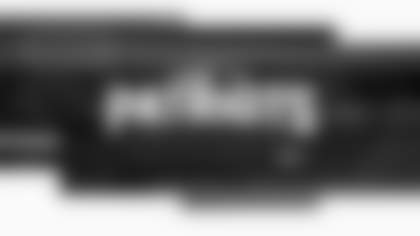It didn't take Andre Tippett very long to notice Stanley Morgan on the football field.
"From the first day of training camp after I was drafted you could see this connection between Stanley and [Steve] Grogan," Tippett recalled. "I obviously knew about Stanley already, but it wasn't until training camp that I saw that incredible athletic ability and understood just how special Stanley really was."
By the time Tippett arrived in New England as a fresh-faced rookie in 1982, Morgan was already well on his way to a Hall of Fame caliber career. The 5-11, 181-pound Morgan was drafted 25th overall in 1977 and played all but one year with the Patriots, retiring as the team's all-time leader in career receptions with 534. The estimable Troy Brown surpassed that total last season, but Morgan's totals of 10,352 receiving yards, 19.4-yard average per catch and 67 touchdowns all are far and away franchise bests.
Remarkably, the indefatigable wideout never lost his trademark speed throughout his 13-year career in New England. Consider that in 1989, his final year with the Patriots, Morgan averaged a robust 17.4 yards per catch. In fact, his best year probably came in 1986, his 10th NFL season, when he set career highs with 84 catches for 1,491 yards (17.8 per catch) and added 10 touchdowns, the second-highest total of his career.
Eye-popping numbers like those led to Morgan being selected as one of three 2007 finalists for induction into the Patriots Hall of Fame, joining tight end Ben Coates and running back Ron Burton, and ultimately receiving the fan vote to secure his induction.
"It's amazing to me that Stanley wasn't already in the Patriots Hall of Fame," said Grogan, who completed more than his share of bombs to the former Tennessee running back and track standout. "Actually, if you take a look at his numbers, Stanley can make a great case for induction into the Pro Football Hall of Fame. He was that good."
Grogan is not exaggerating. Morgan's career stats compare favorably to several wideouts currently residing in Canton. Morgan finished with 557 receptions for 10,716 yards and 72 touchdowns. Those numbers are at least comparable to the likes of Hall of Famers Lance Alworth, Fred Biletnikoff, John Stallworth, Lynn Swann and Paul Warfield.
"What was truly amazing about Stanley was the fact that he never really lost his wheels," Tippett said. "That says a lot about his ability and his work ethic. It probably also had to do with his track background in college, but Stanley was a football player that ran track and not a track guy that tried to play football. He was tough and physical."
Tippett found that out himself one day at practice when Morgan stepped in to help as part of the scout team. The former All-Pro linebacker, himself a finalist this year for induction into the Pro Football Hall of Fame, thought he was going to have some fun at Morgan's expense.
"I remember on one of those rare occasions he was out there giving us a look on the scout team and I figured I'd get physical with him," Tippett recalled with a smile. "I go out there and try to knock him around a bit and hold him up, but he was so strong.
"He could get physical-and that was important back then going against the likes of [Pittsburgh's] Mel Blount and Mike Haynes after he left the Patriots. Those guys were big, physical corners and they could hit you all over the place back then. Stanley was one fast cat and he had the physical and mental toughness to fight through that."
"Teams knew every week that a big part of our passing game plan was to get the ball deep to Stanley Morgan, but somehow he got open anyway," Grogan said. "Stanley was on a whole different level." Tippett agreed.
"I don't know if people just assumed that he'd have to slow down at one point or maybe when Irving [Fryar] came (in 1984) teams just didn't know who to double, but we always knew that if we needed a play to win that Grogs would find Stanley freed up on the sideline on a go route and we'd find a way to win that game."































